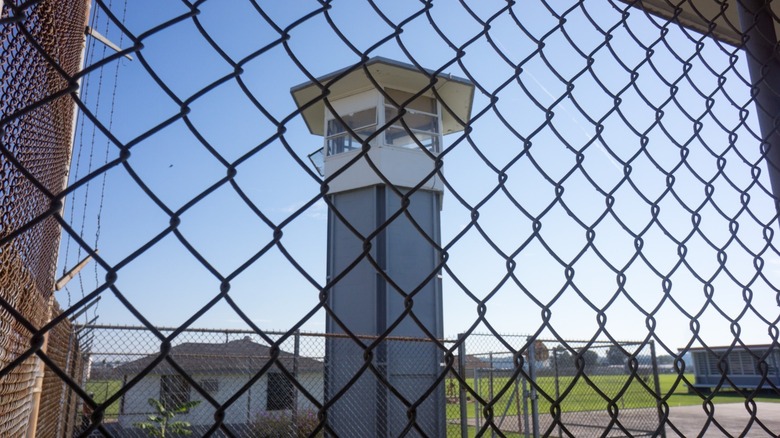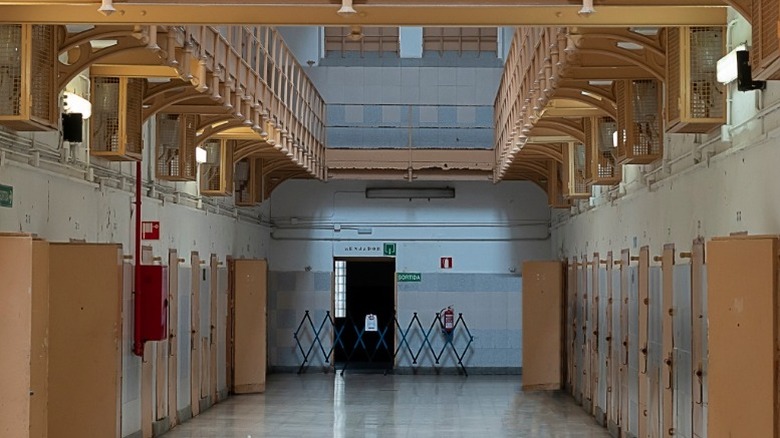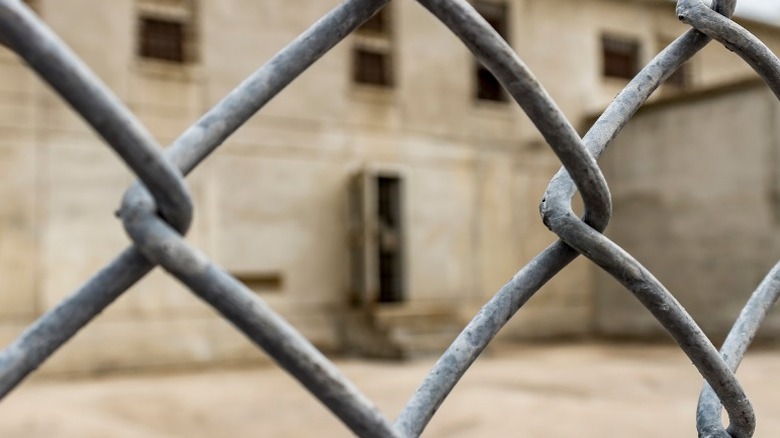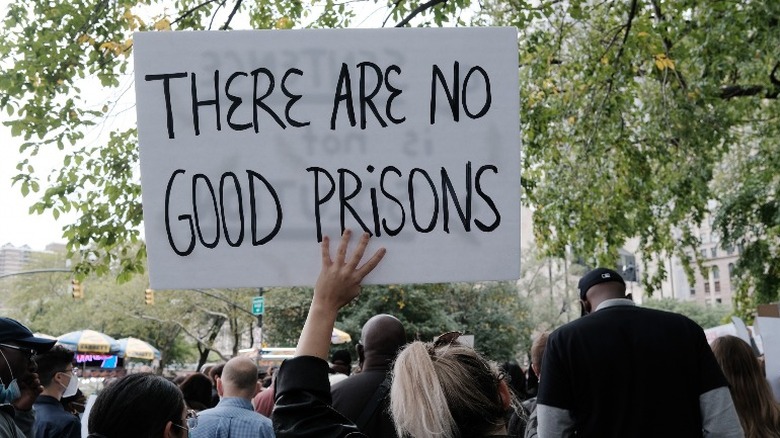The Truth About Life In A Federal Supermax Prison
Imagine being separated from all of the things you love in life: your family and friends, the social life you've enjoyed, and the very freedom to live your life as an adult. But if you are convicted of breaking certain laws, losing the things that are the most dear to you is a reality. Incarceration in the western world is meant to separate offenders from society as a punishment, to protect society from further danger, to deter further criminal actions, and, ideally, give the convicted a chance at some sort of rehabilitation (via Stop the Crime).
From county jailhouses to federal prisons, the U.S. has an inmate population that hovers around 2 million people at any given time (via The Sentencing Project). With the number of those newly incarcerated growing from an estimated 40,000 in 1980 to over 400,000 in 2019, the demand for places to house prisoners has exploded.
While movies and television might have painted a picture about what life in prison is like, rarely does cinema focus on what really happens behind the walls of a supermax prison. These institutions are intended for the most dangerous persons in our midst. Domestic terrorists, drug lords like El Chapo, and others who are an extreme threat to society are housed deep within the bowels of these buildings.
You're surrounded by concrete
Former inmate Travis Dusenbury was locked inside the infamous Administrative Maximum Facility (ADX), in Florence, Colorado. For 10 years, Dusenbury served time in what has become known as the "Alcatraz of the Rockies" (via The Marshall Project). After his release, Dusenbury recalled what his time was like at ADX.
In this prison, you'd be locked in your cell anywhere from 22 to 23 hours a day. You would have no window. The only view you have is of what is inside of your cell. The cell itself is made up almost entirely of concrete; concrete walls, concrete floors, concrete slabs for a bed and a desk. Aside from you and the concrete furniture, the only other thing in the cell is a small sink and an open toilet. And plenty of time throughout the day to take it all in.
With ingoing and outgoing communication severely restricted, there isn't a lot you'd be able to do in the cell. Dusenbury would read and work out. Writing anything is difficult, as the pens they allow you to purchase are prohibitively expensive, while also being flimsy and small, to prohibit their use as weapons.
Interactions with other humans are brief
Each day at ADX, you will get an hour or two for recreation time. This means you are let outside your cell into a bigger, fenced-in area so you could walk around. While there are other inmates in this makeshift yard, you would all be separated by fencing. As an inmate, this limited amount of time each day would be the most interaction you would have with other humans. The holes in the chain link fence are so small that the only physical contact you could manage would be what Dusenbury referred to as "finger handshakes" (via The Marshall Project).
Dusenbury spoke of how he and other inmates might communicate with each other while inside their cells. One could take a toilet paper tube and set it on the sink drain. Blowing into the tube would remove water from the pipes. The pipes from the sink drain were connected to a neighboring cell, so any sound going into one drain could be heard from the adjoining one. Inmates would then speak into the toilet paper tubes, carrying on conversations with whomever their sink drains were connected to.
If you're lucky enough to have gained a bit of trust from staff, you might be allowed outside of your concrete cell to work as an orderly or a janitor. This would give you a bit more interaction with correctional officers and the occasional inmate who would be escorted from unit to unit.
Calls for reform
Most anyone will agree that prisons are a necessary system in our society. Keeping individuals who willingly do harm to others separated from the rest of functioning society is a service that any government owes its people. But do the methods of incarceration do more harm than good, in the long run?
Reform advocates cite numerous studies that show the harmful effects that this type of incarceration does to the inmates. As there are many housed in supermax prisons who will someday be released into the world again, advocates argue that these conditions border on solitary confinement, and will create significant psychological harm (via American Civil Liberties Union). And even though they will argue that many who are kept behind prison walls for life deserve to be there, they maintain that our common humanity should dictate a more humane form of treatment for anyone we remove from society.



